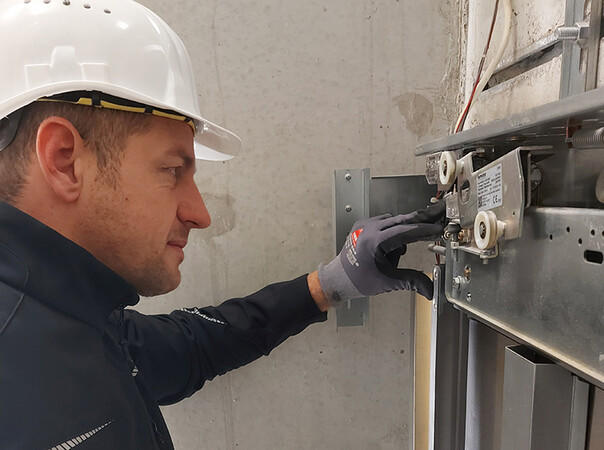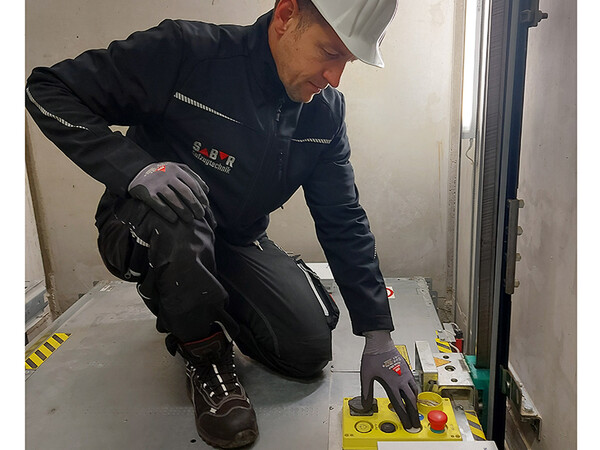How much sense does a full maintenance service make for lifts?
A full maintenance agreement gives the operator the idea it no longer needs to worry about anything. It has, as it were full insurance cover for its lifts. But what makes sense and when does a normal maintenance service make sense for operators?
To make it quite clearly at the outset: a full maintenance agreement for new lifts does not make sense. This is because manufacturers normally provide a guarantee from two to five years – as customers prefer. During this period, the operator can assume that in the event of a defect or failure of parts or components, the manufacturer will provide a replacement and repair the lift – free of charge.
Having the standard maintenance done by the manufacturer during the guarantee period is advisable, but of course not absolutely necessary. In the event of a defect, one can then avoid the charge that the service provider might have been responsible.
During this period, a normal maintenance service is completely adequate and is nowhere near as expensive as a full maintenance service. Incidentally, the prices for the full maintenance service as well as for a normal maintenance service can vary greatly from manufacturer to manufacturer. Consequently, comparing prices is definitely worthwhile.
100,000 euros for the full maintenance service?
 Photo: © SBR Aufzugtechnik
Photo: © SBR AufzugtechnikA practical example: according to the manufacturer, a passenger lift in a well-maintained multi-family building, all owners, is 21 years old and must be renewed. However, there are no longer any spare parts for the lift. Consequently, it cannot be repaired, because the technology installed was only produced by one manufacturer and installing other parts in the lift is not possible.
At the time of erection, the lift cost approximately 20,000 euros. The operators have had a full maintenance agreement for 21 years. The sum paid amounts to about 100,000 euros. The offer for the new lift comes to approximately 50,000 euros.
One might think that the repair required would be included in this full agreement. This is because it not only includes the costs for maintenance, but also a share for repairs. In principle, the repair is included in the agreement – but no technical innovations!
This means that since in the meantime the standards and technological state of the art have changed, components may have to be installed that simultaneously represent a technical innovation. However, everything that is not a 1:1 replacement is regarded as an innovation. The operator must pay for the more modern components, since these costs are not covered by the full maintenance agreement. Tough luck for the operator ...
Only after expiry of the guarantee
But when does a full maintenance agreement make sense? It is worthwhile after the guarantee has expired with a sensible duration. Innovations must be included in such an agreement. For example, if the controller or drive is defective, the costs for renewal must be included.
But this is the case only to a limited extent. Consequently, operators should look through the lift purchase agreement and ask the manufacturer how long it guarantees spare part availability. Experience shows that a full maintenance agreement makes sense after the guarantee has expired up to a lift age of ten years. After this the spare parts are usually not available, whatever the manufacturer promised upon purchase.
You can even go as far as to specify that the renewal should occur within a particular timespan. This would result in a win-win situation, since the customer or operator knows what they are paying for. And the lift company not only has an order for maintenance, but at the same time for one or more lifts in the future. As a result, customer retention is probably in the cards.
Alternative: straightforward maintenance service
 Photo: © SBR Aufzugtechnik
Photo: © SBR AufzugtechnikThe alternative is a straightforward maintenance service. The lift is regularly checked and looked after. In this case you should take care, for example, that you are not invoiced four maintenance visits per year, but only one is actually done.
Moreover, the operator should at any rate check what services are included in the agreements. In my experience, standard maintenance is advisable with additions such as:
• cleaning
• provision of personnel for main inspection
• delivery of detailed maintenance proof (check lists).
Other companies in addition offer the provision of a licensed inspection body for recurrent inspections. Here, operators should consider carefully whether as a result they will actually get a neutral inspection by the inspection organisation.
Look for neutral components
The question of the maintenance agreement already plays an important role during purchase or in commissioning the delivery of a lift. Operators should look for neutral components and be wary of manufacturer-specific solutions. This is because the operator binds itself to the manufacture and later cannot use any other components for its lift and compare prices.
Many owners believe that their monthly flat rate of 25 euros a month for lift maintenance, for example, is actually quite reasonable. But if you multiply that by the number of owners and calculate it for the whole year, maintenance of the lift may cost 6,000 to 8,000 euros. Not quite such a bargain then, is it?
By Horst Schickor
The author is the owner and managing partner of SBR-Aufzugtechnik.
More information: sbr-aufzugtechnik.de


























Write a comment